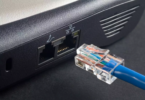the ultimate guide to SaaS integration
SaaS solutions have become a core aspect of contemporary businesses that are equipped with powerful tools as well as documentation necessary to build effective and scalable systems. But introducing a different from existing
SaaS product or feature can be quite complicated, and require quite thorough planning. Launching SaaS products has since evolved towards product-led growth (PLG) and the attraction of end users.
For a higher likelihood of success, a step-by-step approach involves making pricing choice decisions, product roadmap design, and considering either a full or beta launch. Obtaining feedback from prospects before the full rollout and providing them with an interactive experience, may be helpful. Using these steps companies can ensure the successful completion of SaaS launching a new product or feature in a highly competitive market.
This article presents an outline of the streamlined SaaS integration plan that emphasizes the advantages, case studies, option strategies, and viability to ensure a hassle-free service.
Benefits of SAAS integration
SaaS Integration has a list of benefits that include a
reduction in human errors,
improvement in Employee Experience, and Better
Data Management. The advantage of SaaS integrations is that they automatically migrate data and standardize it across platforms, eliminating expensive errors and minimizing manual input. This can lead to increased employee satisfaction and motivation, which in turn creates a more profitable working environment. Furthermore, integration with SaaS applications could also contribute to data accuracy and validity by eliminating human errors and updating all end-user’s latest information.
Example of SAAS integrations
The SaaS integrations can be deployed in several situations such as coordinating a CRM to an ERP system that automates the data transmission and avoids errors occurring due to human factors. In such a way, the integration of the coding repository with the project management tool will shorten stages and ensure individuals work together in efficient ways. By combining a customer service system with marketing automation, marketers can provide their customers seamless experience.
Strategies for seamless SAAS integration
To ensure an integration of SaaS it is important to consider the strategies:
Native integrations: Wherever possible, use native integrations offered by vendors in SaaS models. These integrations are usually pre-baked and, as a result, can be easily installed leading to less need for custom solutions.
Third-party solutions: If such gaps cannot be covered with native integrations, it is advisable to use third-party integration solutions (iPaaS) for the process of integration. These solutions offer various pricing structures and incorporate security features including HTTPS, as well as role-based governance.
Involve stakeholders: Guarantee the active participation of relevant stakeholders so that such integration addresses their needs and expectations. This could result in a more applicable and flexible workflow.
Visualize the system: Picture the future platform and survey SaaS tools before implementing any integration. This will aid in detecting dependencies and constraints that inform your integration strategy.
Substitute weaker integrations: When scaling the product, consider shifting from poor third-party integrations to bespoke software solutions for consistency and supportability.
Through such approaches, one can realize a perfect SaaS integration that streamlines workflow processes to prevent errors and benefit the overall employee experience.
SAAS product feasibility
Before launching into an integration project, it is necessary to establish whether your SaaS product can survive. It involves identifying a niche, market demand, and technical feasibility. This procedure should start by conducting a thorough market study. This involves establishing what your target customer needs and the gaps in that market can be filled by a SaaS product.
Technical feasibility is one of the types of evaluation examining technical specifications for your SaaS product including hardware,
software, and infrastructure requirements necessary to accommodate it. This also involves evaluating the scalability, security, and stability of SaaS products.
In conclusion
SaaS integration is an integral part of modern businesses, offering benefits and opportunities to streamline processes as well as improve data quality. Organizations can also invest in considered integration measures and make sound decisions, knowing the methods and cases for perfect SaaS alignment. This will eventually lead to improved efficiency, productivity, and job satisfaction. It’s important to assess the technological feasibility of your SaaS product, understand market expectations, and identify a niche before moving towards investing in integration for any Saas offering.






